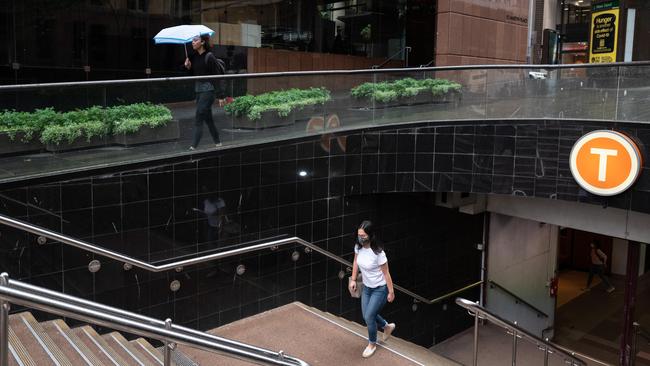
Getting back to work is the last thing on the minds of most Australians, particularly at the start of a hard earned break, but it is eventually going to come around.
February had been pencilled in as corporate Australia’s unofficial month to force staff back into the office and get workers into a more regular cycle, mostly by being at work two to three days a week.
HR departments which have been developing plans for this blended workplace model are pushing the February deadline back deep into March.
For some workers the latest breakout may even mean a post-Easter return to the office, adding to pressure on rib-skinny CBDs.
Rising Covid case numbers leading up to Christmas and into the new year are prompting a rethink across big business.
On Monday Victoria reported 8577 cases and NSW added 20,794 Covid cases.
Even with hospitalisation rates from the fast-moving Omicron strain so far stable, few big employers want to risk an outbreak of any sort among their own workforces.
With staff already in short supply, no one wants to push workers through a crippling testing and isolation cycle when they come into close contact with a Covid case.
The pre-Christmas case number surge in NSW prompted Premier Dominic Perrottet to reintroduce indoor mask mandates and encourage people to work from home where possible.
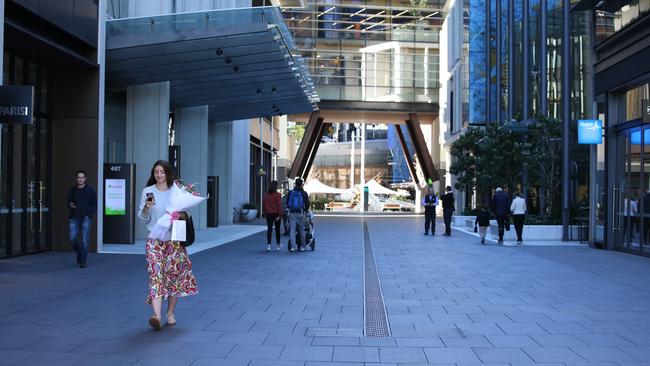
For companies with big office-based staff, that means working from home remains a predictable quantity for now. Of course, staff in retail, transport, cafes and restaurants – essentially everything that can’t be done from home – have already been turning up through the different work cycles of the pandemic. Technology means office workers have been easily able to stay away.
An informal (and unscientific) survey by The Australian of at least 10 large ASX-listed companies in the two weeks leading up to Christmas found work force numbers rarely passed 50 per cent in the office for a sustained period. For those that did turn up, hybrid weeks were the new norm, ranging from two to three days in the workplace, with Tuesday to Thursday the most popular.

Prior to the Omicron spread the feedback from businesses was that Sydney-based staff were more likely to be back, albeit in small numbers, while Melbourne staff were putting off a return until “sometime in the new year”. One large ASX-listed company that had recently moved into a new corporate HQ in Sydney found that putting on catering delivered a surge, but the numbers quickly fell away after the food was put away.
Looking at Google mobility maps – another unscientific data point – people attending workplaces in the Sydney CBD were down 57 per cent from the baseline over the six weeks to December 22. Public transport trips during the same period were down 63 per cent. In the Melbourne CBD, Google mobility data showed workplace attendance down 42 per cent from the baseline, and public transport visits were down 57 per cent over the same period.
Still, corporates are not calling time on the office. Far from it – for the most part they want their offices thriving and intend to work hard to get to this point.
The view from the top is that the office is a key driver for corporate culture – including setting standards and expectations. Executives argue it helps collaboration and innovation.
Highly engaging and appealing workspaces will remain in demand by companies seeking to attract talent.
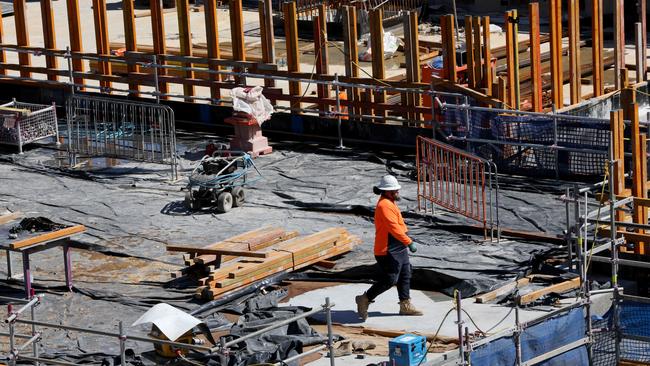
Think of tech companies Canva and SafetyCulture, which have both spent up big in recent years with flashy new inner-city headquarters. Atlassian, which develops project management software that allows teams to work remotely, is pushing ahead with a spectacular, 40-storey global head office near Sydney’s Central Station at a cost of more than $500m.
Through the pandemic Jamie Dimon, the boss of JPMorgan, maintained his strong support for people getting back to the office, subject to the health advice. Earlier this year he said working from home simply “doesn’t work for those who want to hustle”. He said home work hurt spontaneous idea generation and didn’t work for young employees.

Richard Sheppard, the chairman of property major Dexus, maintains that offices are still in demand, although companies are centralising office investments into single CBD sites.
He recently told investors that the feedback from corporate clients is that workplace flexibility is here to stay, but to different degrees and depending on the company.
Sheppard noted many were adopting a blended or hybrid model that allows greater flexibility for employees to work from home but offices continue to play an important role. This model still had some time to play out, he noted, as businesses explored how to create the optimal blend of the physical and virtual workplace.
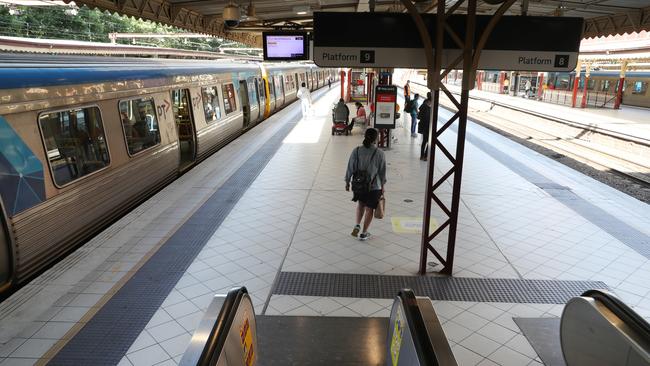
Julian Kurath, a director with LPC, one of the nation’s top corporate leasing agents, says companies have been looking for a level of certainty and consistency around Covid rules. The frequently changing landscape means it has been easier to allow staff to stay at home.
Kurath’s big corporate clients now don’t think about using the space that they once did, with working from home in some form going to be a permanent feature.
New leases being entered into by corporates are now looking at 75-80 per cent capacity as a “starting point”, he says. The days of one person to one desk “are not coming back”.
However, he says leases are still being signed but critically they now contain revision clauses giving companies the flexibility to revisit their workspace needs at the end of the lease cycle. This allows companies to scale up or further reduce space, depending on how hybrid working plays out over coming years.
Sometimes the flexibility works for the business. Some corporates are embracing flexible working, knowing the unspoken trade-off has been securing longer working hours from some workers who are no longer commuting to the office.
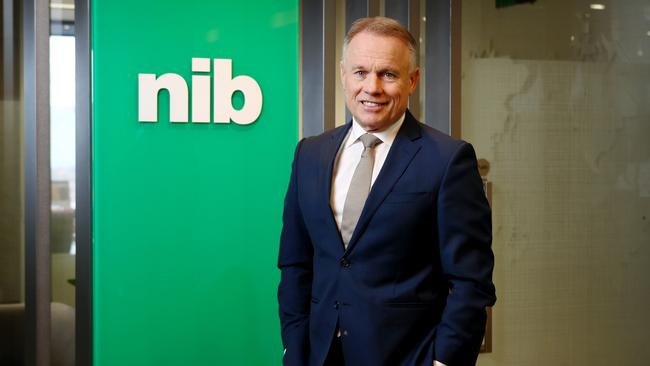
Health insurer NIB has been more explicit, with chief executive Mark Fitzgibbon in October offering home workers $1200 in recognition that costs – rent, heating, power and telecommunications – were being pushed back onto employees. NIB became the first major company to move to a more permanent remote working model. Big four accounting firm PwC will allow its Australian staff to work from home from eight countries for up to eight weeks of the year – this will help staff have extended overseas visits, often for family reunions.
In September a landmark paper by the Productivity Commission looked at the shift to working from home and it noted that it will be companies themselves that determine work from home policies – at least in the short term.
It said that many firms are likely to experiment with the hybrid model, where workers spend two to three days a week in the office and two to three days working from home. However, in practice, if everyone shifted to the hybrid model at once this may be more difficult to execute well, due to increased management and co-ordination costs.




As Omicron disrupts the start of January, the Covid strain spread across the country is about to put on hold the return to the office.